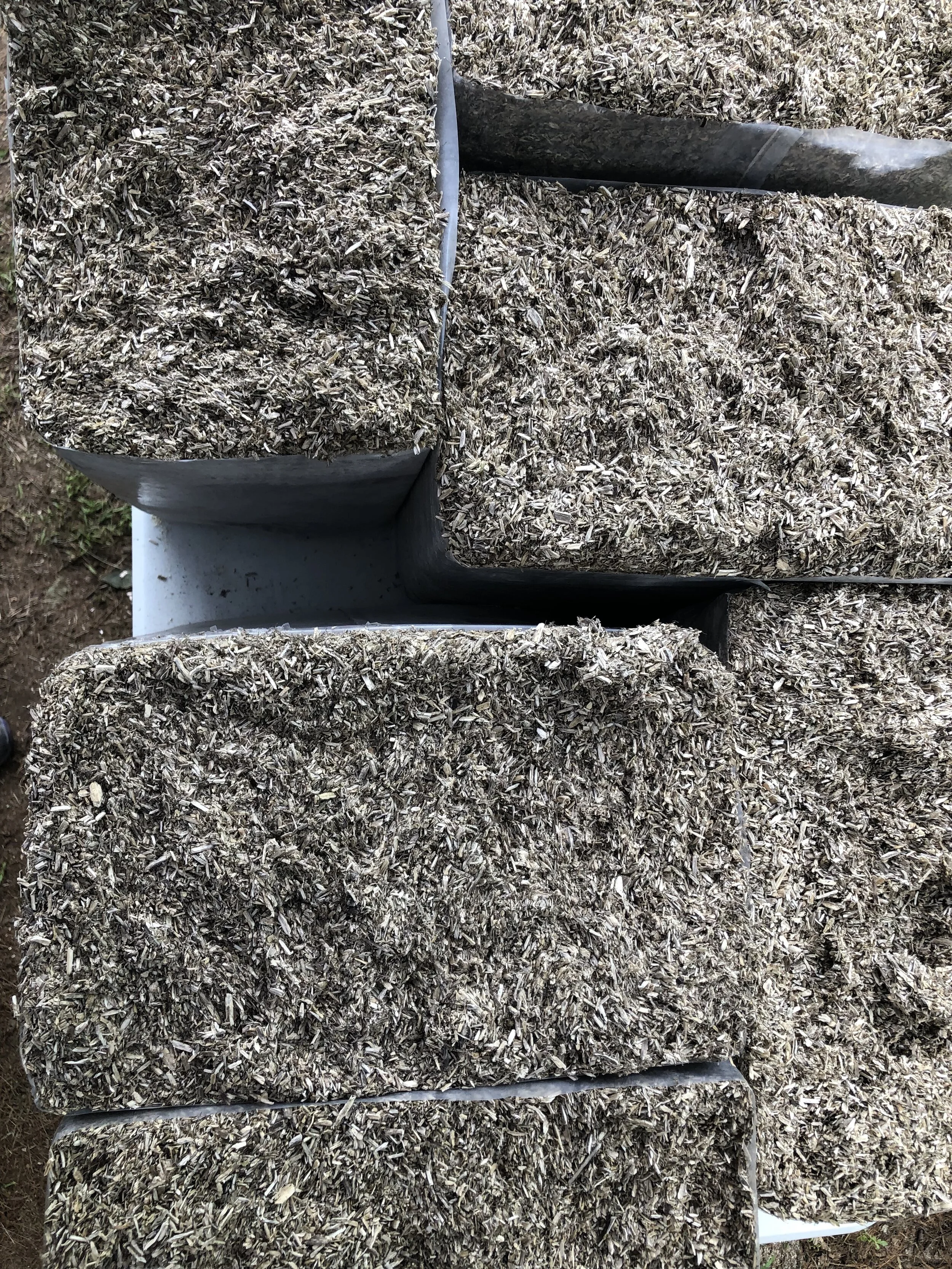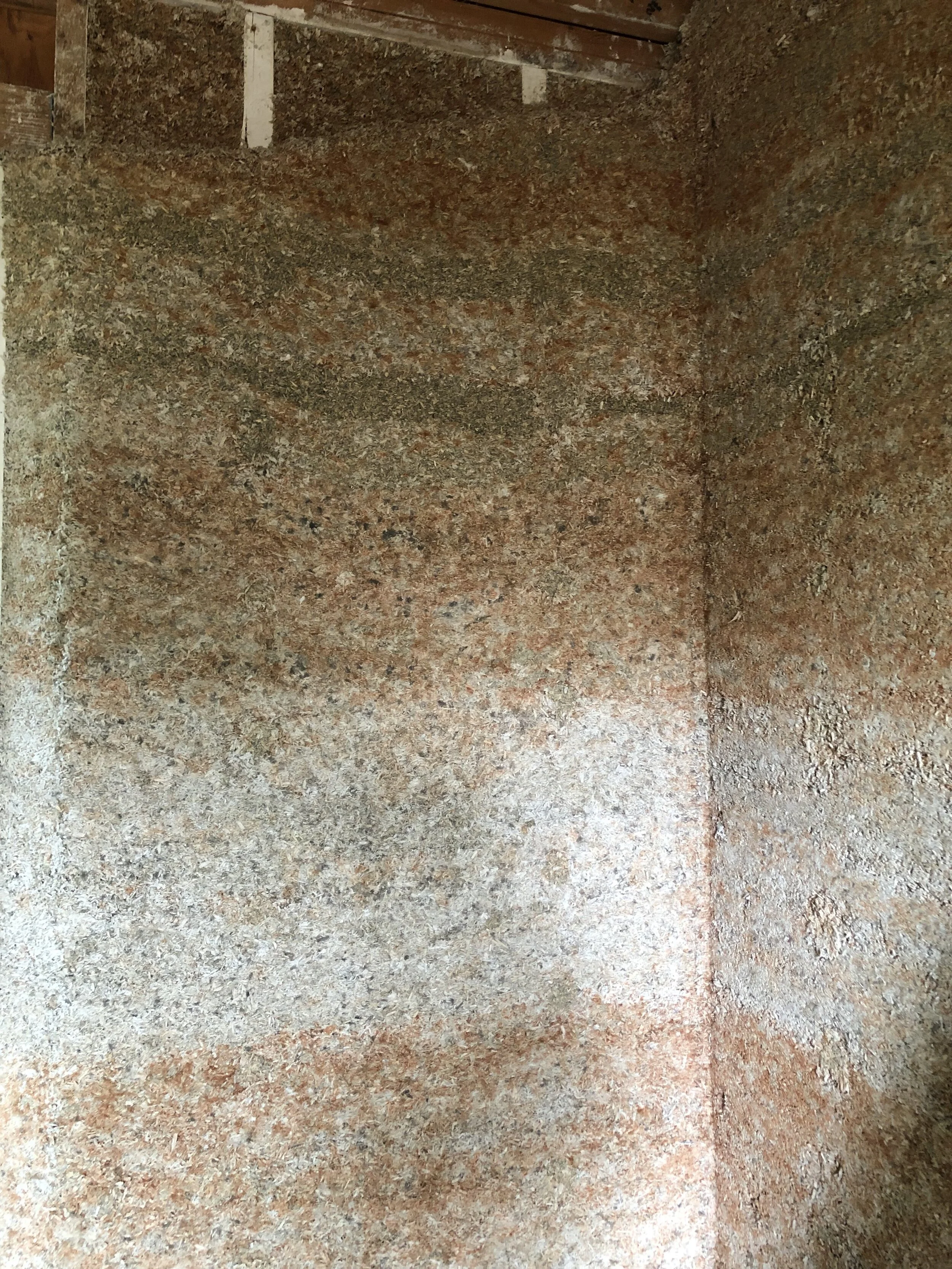Project Management: Logistics
The logistics of managing a hempcrete project can be sorted once the bigger picture is out of the way. Hempcrete is a nascent industry in the US, and as discussed before, this can create both opportunities and challenges. The US hemp hurd processing industry is not quite at the stage where we can call the processor and get the exact material specifications and quantities we need in a short amount of time. As they are very new, the processers need clarity on hurd size and need significant lead time to get the material in order. Also, as we all have learned through the pandemic, we must consider that shipping the hemp hurd may take more time than expected. Then comes the question of storage. Hemp hurd cannot be exposed to wind, rain, direct sun, etc., and you must find a location big enough to store it during the installation process.
This hemp hurd is from the Netherlands, but we hope to work with more US based processors soon!
When installing hempcrete, it is essential to determine which installation method is best suited to the size, scale, and site conditions of your project.
Currently, hempcrete can be installed by cast in place, spray application, blocks, and panels. To read about these different installation methods, be sure to keep your eyes peeled for a future blog post about the pros and cons of each!
Once the best installation method is determined, it is imperative to understand the equipment needs. For example, panel installation requires a crane and spray application requires a special machine called a Valkariy. These must be procured in order to ensure a smooth installation process. Each installation method uses an entirely different skill set as well.
The Valkeriy in action in Cape Cod!
Next, you must determine the approximate drying time of your selected installation method. There is no hard and fast rule of how long it will take, but when installing hempcrete dry, as with the block or panel method, it will take less time than wet, these being cast in place and spray apply. This drying time also depends on the climate and season.
Hempcrete that is in a damp environment will develop surface mold. This only requires a spray of a bleach and water solution and there is no harm to the hempcrete. Also, hempcrete will never mold on the inside.
To determine when to begin your hempcrete installation, it is easiest to work backwards with poll planning. With poll planning, the project manager and all the stakeholders will look at a schedule at the beginning of the project and start by looking at the final step. Essentially, the “move-in” date is determined or approximated and the team works backwards from there. All the stakeholders can communicate their needs and this method provides a clear line of communication, efficiency, and accountability.

